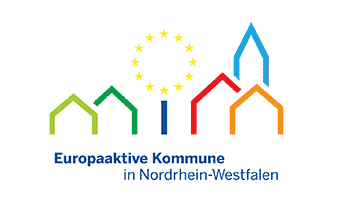Inhalt
Historischer Rundweg - Board 6
Protestant Church
The Church, a single nave brick building with a flat wooden ceiling and round choir apse, was consecrated in 1884.
Community with a significant history
The once reformed community in Weeze has a significant history. As of 1575 a small reformed community in Weeze, under the continuous protection und with help from the Hertefeld family, secretly and in spite of the pressure of the catholic heirarchy and the marauding Spanish soldiers in the course of the 80-year war (1568-1648), was able to grow. Followers of a reformation movement can also be verified prior to this time. As early as in 1551 there were reports of a certain Willem de Kistemaker, who lived as an Anabaptist in Weeze and due to his confession was convicted in Cleves and executed.
Initially curated from Goch the reformed community was able to celebrate Eucharist in the Hertefeld Manor under the leadership of their first preacher Johann Georg Sittard in 1631.
The reformed were a minority compared to the roman-catholic population. In the 17th and 18th century the reformed landowner, the Elector of Brandenburg, filled the seats of public institutions and the court, also in Weeze, with reformed individuals. Apart from that he also stabilised the finances of the church community. The gentry of the Hertefeld family also generously supported the Protestants in Weeze, so that not only preachers and teachers were able to be paid, but also members of the community were able to be supported. In return the family wanted a say in the choice of the preacher.
Famous parsons
Weeze was like a diaspora for the Protestants. Nevertheless there were parsons working here who made a name for themselves. The Municipality of Weeze remembers Father Friedrich Adolf Lampe, who was chosen by the Weeze Presbytery in 1703, at the tender age of 20, with a street named after him. Later he was a university professor in Utrecht and in Bremen and is seen today as a major proponent of reformed pietism. He is also known as a poet who wrote more than a hundred hymns. Johann Christian Gottlob Ludwig Krafft, who was active in Weeze between 1808 and 1817, also attained fame. As a preacher and university professor in Erlangen he significantly influenced the inner and outer mission as well as the Bavarian revivalist movement.
Kirche
There was no congressional room or even church for services available to the community at the beginning. As of 1631 Hertefeld Manor served as a place to preach, subsequently the community rented a house on the market square. In 1659 the less than 100 members of the community built an octagonal church in the Wasserstraße, which, however, burned down in 1769. In 1773/1774 the new church was built, but in 1880 the work on it had to be stopped, because of disrepair. In 1884 the building of the new church on Wasserstraße, a single-nave brick building with a flat ceiling and round choir apse was inaugurated. In spite of war damage it has remained intact up until today.
School
School education belonged to one of the central tasks of the Protestant community, because literacy allowed each person to read the bible independently. In Weeze since the mid-17th century there was a school house located next to the reformed church on Wasserstrasse (today the Markt-Café is located there). The school master was an employee of the reformed church community. In 1903 a Protestant school, including a teacher’s flat, was built on Fährsteg, it was closed due to a lack of enrollments in 1938 and was then turned into a home for the Hitler youth. After the large influx of Protestant refugees and exiles the school was reopened in 1948. In 1958 the newly-built Protestant school on Matthias-Claudius-Strasse was moved into and it served as a school until the end of the 1960’s.
Friedrich Adolf Lampe(1683-1729) was a preacher in Weeze from 1703 to 1706, Portrait from around 1720, University Museum of Utrecht.
Johann Christian Gottlob Ludwig Krafft(1784-1845) was a preacher in Weeze from 1808 to 1817. Paper-cutting of the head.
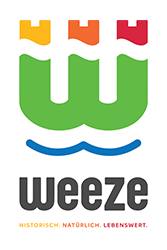

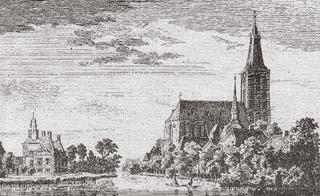
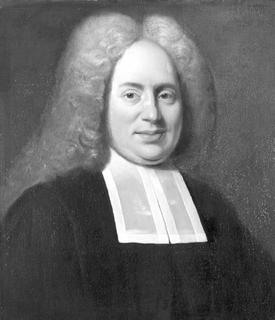
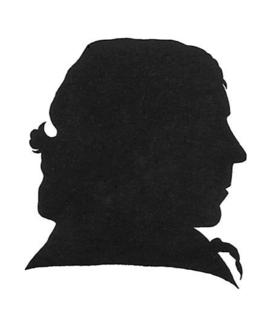
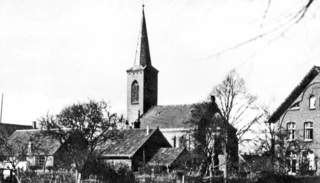
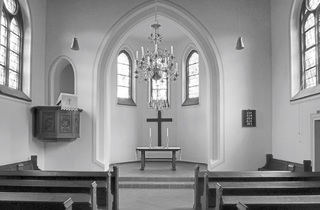
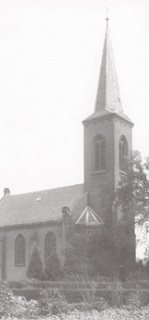
 02837 9100 (Zentrale)
02837 9100 (Zentrale) info@weeze.de
info@weeze.de Facebook
Facebook